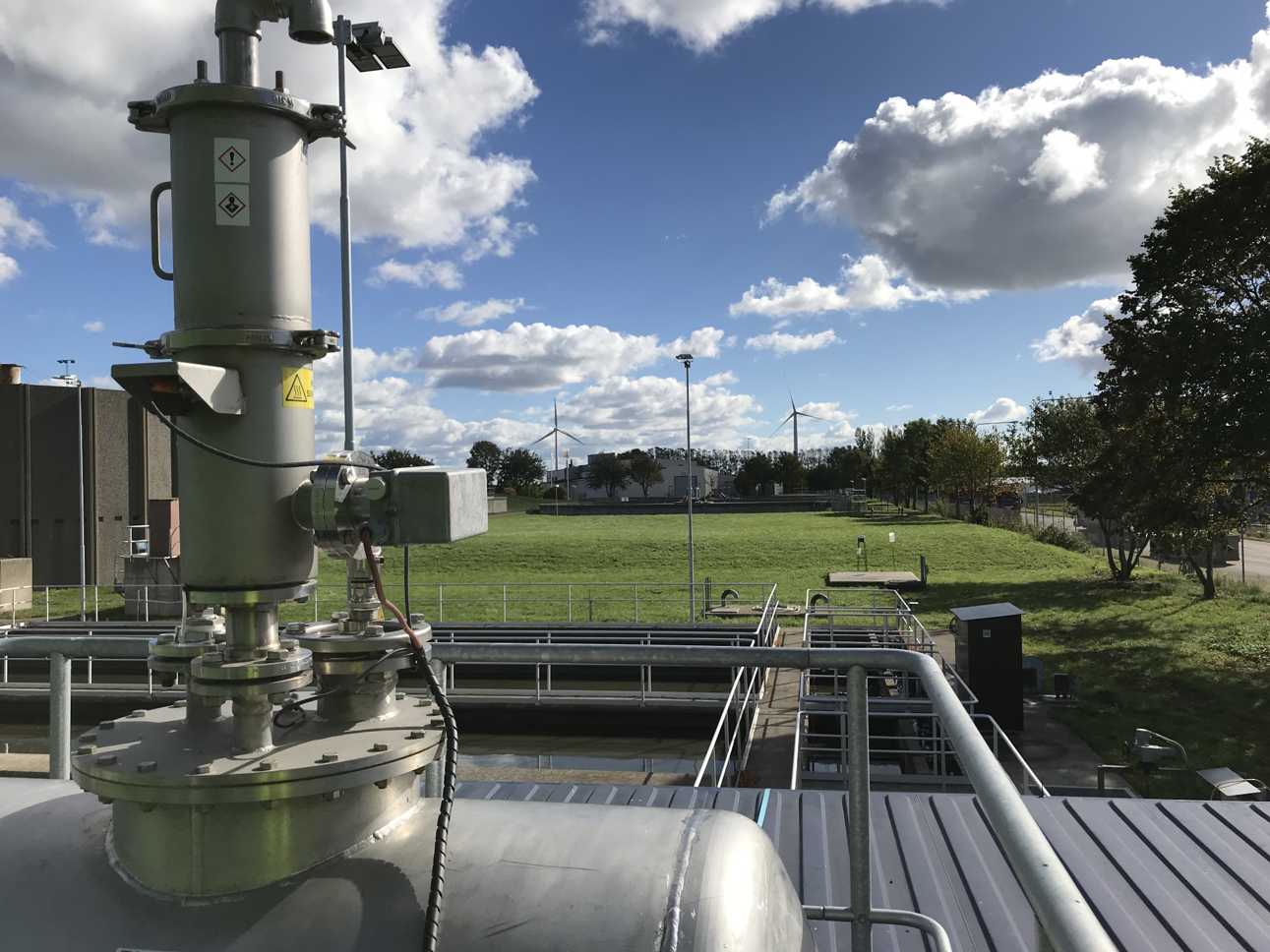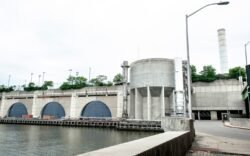Alexandria Wastewater Treatment Plant

The Alexandria Wastewater Treatment Plant (AWTP) serves as a critical infrastructure in the preservation of public health and environmental quality in Alexandria, Virginia. Over the years, the plant has evolved in capacity, technology, and operations, to address the growing demands of urbanization and the increasing complexity of modern waste streams. This comprehensive article examines the AWTP’s history, engineering aspects, operational procedures, and its environmental and social impacts.
Historical Background
Early Development
The origins of wastewater management in Alexandria can be traced back to the 1950s when the need for a structured approach to sanitation and waste disposal became apparent. The increasing population and subsequent urban development necessitated the establishment of a systemized wastewater management framework.
Initially, wastewater disposal was rudimentary, relying heavily on cesspools, septic tanks, and direct discharge into local water bodies. As environmental awareness grew, along with federal and state regulations, so did the pressure to improve wastewater management infrastructure.
Modernization and Expansion
By the late 1970s, Alexandria had invested heavily in upgrading its wastewater treatment capabilities. The AWTP was designed and constructed as a state-of-the-art facility incorporating primary and secondary treatment processes.
Continuous modernization has been undertaken to adapt to new regulations. The introduction of tertiary treatment processes and advanced nutrient removal technologies in the late 1990s and early 2000s marked a significant step in reducing the environmental footprint of the plant.
Engineering and Technological Aspects
Key Components and Processes
The AWTP employs a holistic treatment approach involving several key components and processes:
-
- Preliminary Treatment: This initial stage involves screening and grit removal to capture large solids and debris from incoming wastewater. Mechanized screens are used to prevent damage to downstream equipment.
-
- Primary Treatment: In primary sedimentation tanks, wastewater flow is slowed to allow solids to settle at the bottom. The settled solids, known as primary sludge, are then removed for further processing.
-
- Secondary Treatment: This biological treatment phase employs activated sludge or biofilm processes to degrade organic matter through microbial action. Aeration tanks and secondary clarifiers play crucial roles in this phase, facilitating effective breakdown and separation of biological solids.
-
- Tertiary Treatment: Tertiary processes involve advanced filtration and chemical treatment methods to remove fine particulates, nitrogen, and phosphorous, essential for meeting stringent discharge permits.
-
- Disinfection: Conventional methods such as chlorination or newer technologies like ultraviolet (UV) disinfection are employed to eliminate pathogenic microorganisms before treated effluent is discharged into local water bodies.
-
- Sludge Treatment: Primary and secondary sludge undergo anaerobic digestion, reducing volume and generating biogas, which is often utilized to produce renewable energy. Post-digestion, sludge is dewatered and sometimes subjected to thermal drying, making it suitable for use as biosolids in agriculture or disposed of in landfills.
Technological Innovations
In recent years, technological innovations have significantly enhanced the efficiency and sustainability of the AWTP:
-
- Membrane Bioreactors (MBRs): Integration of MBRs combines biological treatment and membrane filtration, providing high-quality effluent suitable for reuse applications.
-
- Advanced Oxidation Processes (AOPs): Technologies like ozone, hydrogen peroxide, and UV light treatments effectively degrade micropollutants and persistent organic contaminants.
-
- Nutrient Recovery Systems: Technologies for nutrient recovery, such as struvite precipitation, enable the reclamation of valuable resources like phosphorus from wastewater.
-
- Smart Monitoring and Control Systems: Real-time data acquisition and process control through Supervisory Control and Data Acquisition (SCADA) systems improve plant operation efficiency and responsiveness to varying load conditions.
Operational Procedures
Efficient operation of the AWTP requires a regimented approach encompassing rigorous procedural adherence, quality control, and maintenance schedules.
Process Monitoring and Quality Control
Continuous monitoring of influent and effluent quality is critical. Key parameters include:
-
- Biochemical Oxygen Demand (BOD): Indicates the amount of organic matter present.
-
- Total Suspended Solids (TSS): Measures particulate material suspended in the water.
-
- Nutrient Concentrations: Levels of nitrogen and phosphorus are monitored to ensure compliance with environmental regulations.
-
- Pathogen Indicators: Total coliform and E. coli counts reflect the effectiveness of disinfection processes.
Periodic laboratory testing complements online monitoring instruments, providing comprehensive quality control.
Maintenance Regimens
Preventive maintenance ensures the longevity and efficiency of treatment infrastructure. Schedules for inspecting, cleaning, and servicing critical components, including pumps, aerators, and screens, are adhered to strictly.
Staff Training and Safety
Operator competence is paramount. Regular training programs ensure that staff are proficient in operating complex machinery, handling chemicals safely, and responding to emergencies. Moreover, safety protocols aligned with Occupational Safety and Health Administration (OSHA) standards are strictly enforced.
Environmental and Social Impact
Meeting Regulatory Requirements
Compliance with federal and state regulations, including the Clean Water Act (CWA) and the Virginia Pollutant Discharge Elimination System (VPDES) permits, is fundamental to AWTP operations.
Water Quality Improvements
Effective wastewater treatment at AWTP has significantly improved the water quality of the Potomac River and Chesapeake Bay. Reduction of nutrients and contaminants mitigates eutrophication and protects aquatic ecosystems.
Climate Change Mitigation
Energy-efficient technologies and renewable energy generation from biogas digestion contribute to reducing the plant’s carbon footprint. Efforts to minimize greenhouse gas emissions align with broader climate action goals.
Resource Recovery and Circular Economy
The AWTP’s approach to resource recovery, including water reuse and biosolid recycling, supports the principles of a circular economy. Treated effluent is increasingly used for non-potable applications, such as irrigation and industrial processes. Similarly, biosolids are utilized as fertilizers, closing the loop on nutrient cycles.
Public Health and Community Engagement
Safeguarding public health is a primary objective of the AWTP. By ensuring effective wastewater treatment, the risk of waterborne diseases and environmental contamination is minimized.
Engagement with the local community through educational programs, tours, and transparent communication fosters public awareness and support for wastewater management initiatives.
Future Directions
Emerging Contaminants
Addressing emerging contaminants, such as pharmaceuticals and personal care products (PPCPs), requires continuous research and technology adaptation. Advanced treatment methods and regulatory frameworks must evolve to tackle these contemporary challenges.
Climate Resilience
Enhancing the resilience of wastewater infrastructure to climate change impacts, such as increased precipitation and sea-level rise, is crucial. Investments in adaptive infrastructure and flexible operational strategies are necessary to manage these risks effectively.
Integrated Water Resource Management (IWRM)
Adopting an Integrated Water Resource Management (IWRM) approach involves comprehensive planning and management of water, wastewater, and stormwater systems. Collaboration between various stakeholders, including local authorities, environmental agencies, and the community, is essential for holistic water management.
Digital Transformation
The digital transformation of wastewater management, through the implementation of advanced analytics, artificial intelligence (AI), and the Internet of Things (IoT), holds immense potential. These innovations can enhance predictive maintenance, process optimization, and decision-making.
Conclusion
The Alexandria Wastewater Treatment Plant exemplifies the critical role of advanced engineering, rigorous operational practices, and continuous innovation in safeguarding public health and the environment. As challenges such as population growth, regulatory changes, and climate uncertainties persist, the AWTP’s commitment to adaptive management and sustainable practices is essential for ensuring the long-term viability and resilience of urban wastewater infrastructure. Engaging with emerging trends and incorporating technological advancements will further enhance the plant’s capacity to meet future wastewater management demands, benefiting both the community and the natural environment.


